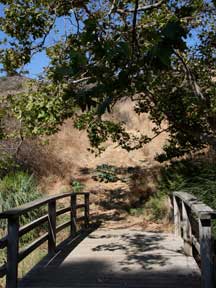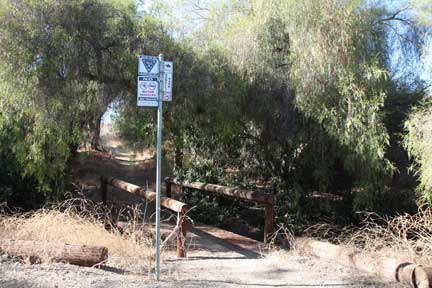Trails Manual a First for County
By Paula Parisi April 20, 2011
The Los Angeles Department of Recreation and Parks is putting the finishing touches on its landmark Los Angeles County Trails Manual. The document, expected to be issued in late May, is the first cohesive blueprint for trails development that the county has put together, and is highly anticipated by members of the equestrian community.
Compiled by Pasadena-based Sapphos Environmental, the manual is designed as “a tool for planning and developing communities,” said Frank Moreno, county section head for research and trails planning. “This is a first for us. We’ve never had a manual approved by the County Board of Supervisors. At the end of the day, we think it will really help not only equestrians, but the development community, too. When we are contacted by property developers and their civil engineers, we will be able to provide them with a document that they can refer to.”
In the past, developers as a rule did not understand how trails could enhance the value of their projects. In areas where a trail was required, they’d generally accommodate the minimum requirement, and residents would try to adapt. The result has often been too-narrow trails and other dangers. Now that development is aggressively encroaching on county land, equestrians are becoming more activist, and the county is acting to protect their interests as well as those of non-riders. “People are concerned about trespassing and things like that, and we have to really lay down the easements, so that residents aren’t feeling imposed on, and equestrians aren’t feeling locked out,” Moreno said.
By March, the Rec and Parks Department had finished the last of its community outreach meetings on the topic. It is expected there will be one more opportunity for written public comment before the manual is finalized and released. “We’ve developed a huge database of names of stakeholders and interested parties, and we plan to invite one last round of further comment,” Moreno said.
The equestrian community has been enthusiastic in its support of the county’s efforts. “The county has gone to considerable time, effort and expense to adopt and develop a standardized set of specifications for recreational trails. How much better news could you get?” said one local trails activist, who asked not to be identified.
While most cities have trail guidelines that they provide to developers, most are slight. The City of Los Angeles’ existing guidelines are only 10 pages long. Locally, La Cañada Flintridge and Glendale are the only cities that have secured state grants to develop guidelines as well as inventory trails, producing documents of depth.

A well-maintained urban trail adds value to the community. (Photo courtesy L.A. County Department of Recreation and Parks)
“We hope to share this with the city of Los Angeles,” Moreno said. “We were fortunate to have the resources to obtain a consultant and have them develop this document for us. The city did not have that luxury, but the intent was they could share it and adopt at least parts of it, in some fashion, as with other cities, because our trail system is regional. It extends from Pomona and Diamond Bar to the east, La Mirada and Long Beach in the south, Palos Verdes to the west, and up the coast to Malibu, Calabasas, Agoura and the Kern County line in the north. So our manual also takes into account the different geographic features: desert, coastal, foothills,” added Moreno, who has been in his current position for about four years, and as with most Recreation and Parks personnel is trained in landscape architecture and planning.
The county is also keeping in mind the needs of unincorporated areas that will someday be developed, including Acton and Algua Dulce. “For someone who might need this resource, now instead of calling a bunch of different offices and getting different perspectives, we will have it memorialized in one place,” Moreno said.
Moreno said that in his experience, the equestrian community is passionate about expressing its interests. “At least three-quarters of the inquiries though the trails division of Rec and Parks probably come from equestrians, which is high, considering their proportion in terms of users. Unlike a hiker or a biker, who is often driving to a recreational destination, the equestrians are often riding out of their homes and their properties, so they seem to get personally invested.”
Moreno concedes that equestrians are also a different type of user. “When riding a large animal, there’s not a large margin of error there. On a bike or foot, they’re a little bit more flexible, and if a trail isn’t meeting their needs, they’ll usually just move on to the next one. When you’re on horseback and encounter a busy street or a narrow bridge, the needs are a bit more demanding.”
“Trail development has gotten a more sophisticated over the past few years, which is why we’ve developed this manual.”
To access a copy of the 188-page Draft Trails Manual, visit the Trails Manual Web site at www.lacountytrailsmanual.com.
Short URL: https://theequestriannews.com/?p=498



